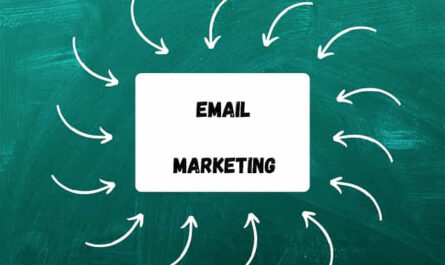
The pictures are the first visual elements that attract a visitor’s attention when accessing a blog. These elements are very important in the structure of a website, that`s why we need to optimize the pictures, before we add it.
And, we must pay close attention to them when we use them because a successful and correctly optimized photo helps your site to position itself better in search engines.
Also helps to present the content writing making it more accessible and easier for the visitor to read. This means that if you have a raw photo on the blog, it will receive black balls from Google.
(This post contains some affiliate links. Should you click an affiliate link and make a purchase I may receive a small commission at no extra cost to you.)
Google is the main and most used search engine in the world that has its own algorithms for ranking a website, but also from visitors.
Images used for a site must be optimized for the web, they must not be posted without prior editing.
There are on many blogs, for example, photos uploaded to the site simply directly from the camera, with a very high resolution, sometimes of the order of a few Megabits, which is huge for a web page.
Besides the fact that it occupies a very large space on the server that hosts that blog, this website will be very difficult to load, especially on mobile devices, which will be an important negative element when considering its positioning in search engines. search.
The Google search engine even offers an online tool (PageSpeed Insights) that can check the loading speed of a website, but not only, “tool” that alerts you when you post unoptimized images on your site, but also offers a ranking of site performance, appreciated depending on the number of optimization “mistakes” you find in the structure of your code.
The more there are, the more the site will go down in results, and other better-optimized sites will take their place.
So, pay close attention to what kind of photos you post, it’s better to waste a few minutes and edit them than to upload them and bury your site taking it as far as possible from the first places in the search engine rankings, and so on. so that it is not accessed by visitors.
Below are two rules regarding the use of pictures on a site:
- the “golden” rule to keep in mind: a web photo should NEVER be more than a few KB.
- another important rule that we must not forget when processing images for our site: the resolution of the uploaded photos must be at most equal to the width of the content of the page where it is displayed.
For example, if the page width is 700 pixels, then the image you want to use on the site must be a maximum of 700 pixels.
Here are some tips and tools that will help you process the images on your web blog as best you can:
Optimized photo size-reduction
Optimizing photos for use in the online environment means primarily reducing the size of an image but without losing its original quality.
The images must be compressed beforehand and, in this sense, we can use some tools that will help us.
As a digital photo format, the most used pictures online are those in JPG format, followed by PNG or GIF. It is preferable to use only the JPG option on your site because it has the best compression algorithm and can be processed most easily from the 3 formats, without altering the original image.
Optimize the pictures tools
The best image editing program is clearly Adobe Photoshop. But, this is a program whose license costs some money, and its operation is not easy for a beginner.
Another tools are Optimole and ShortPixel.com, where you can optimize your images online, but it is not free either, you can still optimize up to 50/100 images per month for free, which can be very enough for a small to medium blog.
There is also a 100% free and very easy-to-use software, it is called RIOT (Radical Image Optimization Tool), it must be downloaded and can be used on your own computer.
With this software, used even by professional photographers to edit photos, you can compress and optimize a photo with just 2 clicks, the result being instantly accessible.
Use as clear images as possible
It is very unpleasant for a user to see on a blog an image that is not retouched beforehand, that is not clearly visible, or is deleted.
If you do not use effective optimization tools, you may be surprised that, reducing many of the size and resolution of edited photos, you lose their quality, which does not work very well for the appearance of your blog.
Use titles, keywords and descriptions for your pictures
A very important aspect for optimizing images for search engines is the fact that you have to “tell” them what that picture uploaded to your blog is. The more detailed the description for the targeted picture, the faster it will be indexed and classified by search engines.
When you upload a picture from the digital camera, it is usually called something like this: IMG4589.jpg. That title says nothing to a search engine.
Let’s say that the picture represents a landscape with a beach from a certain place, for example from Maldive. You must replace that name with what the picture represents: maldive.jpg.
In this way, search engines will understand more easily what that photo is, they will not crawl it and they will classify it accordingly, which will help the blog to get positions in search engines.
TITLE and ALT tags
Another element that helps to optimize pictures from an SEO (Search Engine Optimization) point of view is the use of TITLE and ALT tags.
They must “tell” the search engine what the content of the place where the picture is displayed is. Descriptions must be used that correspond to the image presented but also to the content of the article where it is placed.
The ALT tag is alternate text, which will appear instead of an item when it cannot be played. That is, when a picture is not uploaded to the site for various reasons, its place will be taken by this small text that describes that picture.
Check the copyright for the images used
Obviously, you can’t use photos taken by other people on a blog without their consent. You can not simply copy on your blog an image found on the internet. This must be checked in advance if you have the right to use it because you may find that you will be asked, sooner or later, to remove the image from the site, because the rights to this image are owned by someone else.
Below are some sites that offer you CCO-licensed photos – which gives you the right to copy, modify and use these photos without having to pay for them. Of course, if you want to buy premium pictures you can do this.
- Pixabay
- Pexels
- PicJumbo
- Unsplash
- Stocksnap
- Shortpixel
- Creative Commons Search
Conclusion
Please, tell us in the comments how you proceed when it comes to optimizing photos for your blog and if you have other resources that you use.








